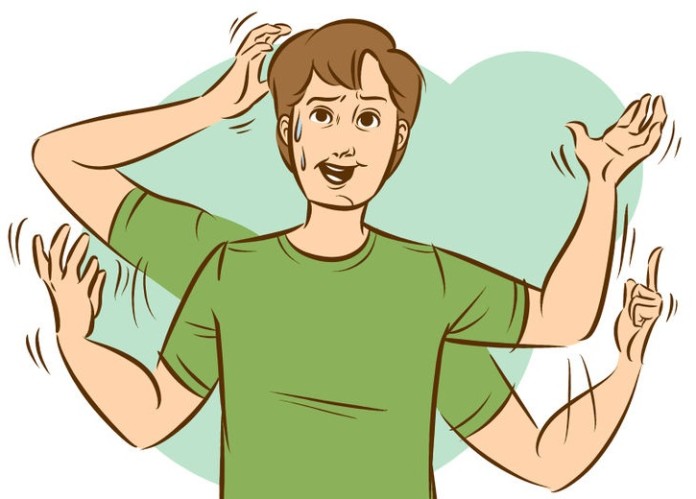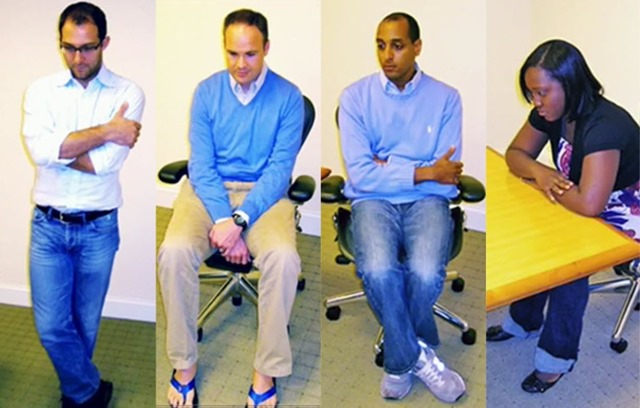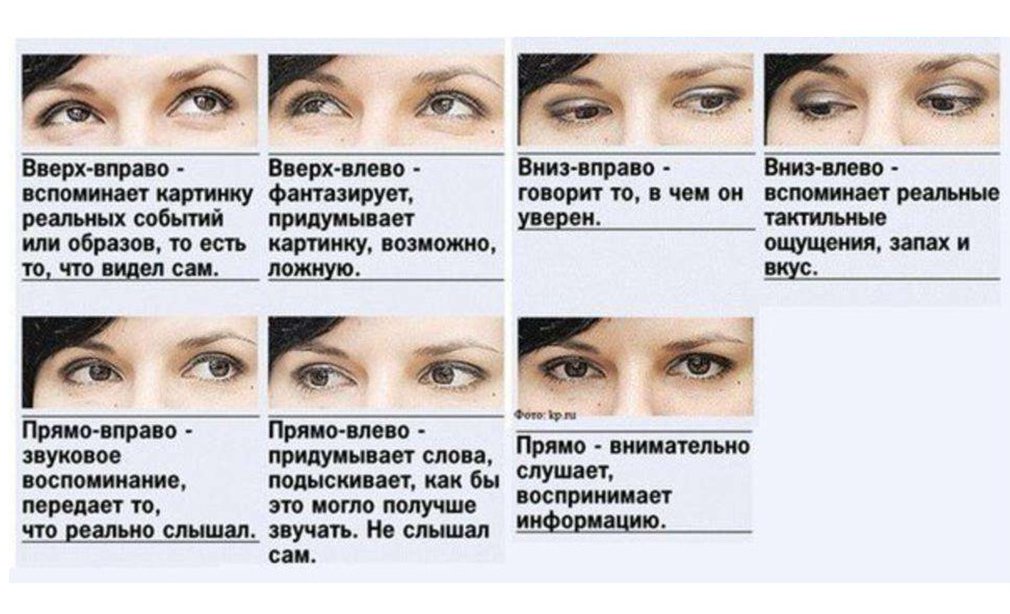
Catch a lie: techniques and methods, deciphering sign language
Agree, it is an unpleasant feeling to be deceived. Is it possible to determine whether a person is telling the truth or lying? Of course it is possible, even necessary! There is a whole technique for detecting lies. You do not need to be a qualified psychologist or physiognomist. The behavior, facial expressions, and gestures of a liar will themselves give you the truthful information you need. How to detect in time the obvious dissonance between “falsehood and truth”? We learn to trust not our ears, but our eyes.
Who usually tells lies?
When telling a lie to his interlocutor, deceiving him, a liar practically does not think about what visual signals he is giving.
There is a fairly common expression: to be caught in a lie. What does it mean? This means to expose, to reveal evidence of someone's guilt, to catch someone in a lie.
Modern psychology identifies four main types of people who tend to tell lies.
Often such liars have low social status.
Truth is on the left
How to catch a person in a lie? Look at his left side. Usually a person is outwardly quite tense, although he tries to hide it. From a neurophysiological point of view, a person has less control over the left half than the right.

For example, if a right-handed person is a liar, then during a conversation he will gesticulate intensely with his left hand. If the right hand is practically not involved in the matter, then be completely sure that the person is lying.
Another discrepancy: the left side of the face is more active. The person is definitely not sincere with you.
Lies are on the tip of the nose
Our own nose gives us away, as they say. If, when communicating with you, a person twitches the tip of his nose or moves it to the side, then think about the sincerity of his words.
If a person flares his nostrils, it means they don’t really believe you.
The nose is quite sensitive to lies. You will want to scratch it precisely when you are lying. In science, this fact is known as the Pinocchio Effect.

Moreover, the lie is scientifically substantiated. Telling lies increases blood pressure. This affects the nasal mucosa. The hormone catecholamine is produced. After that, the stimulated blood pressure of the nerve endings is included in the process of “giving out the truth.” Itching appears. Therefore, if your interlocutor rubs his nose, eye, or simply touches them, he is being dishonest with you. Moreover, this fact has been scientifically confirmed.
Hands... where? Gestures
When your interlocutor is communicating with you, he tries to hide, put his hands in his pocket, or simply close his palms, then with some confidence we can say that he is hiding something from you. This factor is especially pronounced in children.

Hiding your palms or vice versa - opening them - these features can be used against you even in a typical market. An experienced seller will immediately pay attention to your palms if you refuse to buy something from him.

If you cover your mouth with your hand, then this is an external manifestation of the desire not to spill the beans, not to say too much.

If the interlocutor tenses the muscles of his mouth and bites his lips, it means that he has already been caught in a lie.

Gestures cannot be trusted only if they are systemic, that is, a person constantly uses them.
Phrases - “talkers”: verbal signs of a liar
“Honestly”... Do you hear it often? This is the number one phrase that will help catch you in a lie. After pronouncing it, it is better to listen to what information will follow next.
Liars usually say clichés:
- You have to believe me.
- I'm telling the truth, you know me.
- Can I cheat? Never!
- I'm being honest with you.
The essence of deception is hidden not even in what he says, but in how. The timbre and rhythm of the voice changes - this is a reflection of insincerity. If your interlocutor experiences long pauses, hesitations, and difficulty pronouncing the next sentence, be wary. His tone may change due to the fact that he cannot fully control himself. If the interlocutor speaks to you calmly and in a low voice, he is most likely telling the truth.
Gestures add information to you that in front of you is a liar. If there is a mismatch between gestures and words, think about the person’s true intentions.
If a person lies to you, his emotions may rage. Outwardly, it will resemble a sapper walking through a minefield.

Pauses in speech. A liar's attention is usually unfocused. He literally selects the words to “lie.” In this case, long pauses of 5-10 seconds are formed. Pay close attention to how the person speaks to you.
Repeats your question. To gain some time, the liar will immediately repeat the question after you. Yes, it's a few seconds. But a liar usually has enough time to come up with an answer to it.
And lastly: in a conversation, a liar will always talk about his innocence. Does an innocent person have anything to justify himself for?
Postures when talking
Even your posture during a conversation can reveal a lie. For example, a person is in a tense, uncomfortable position that is not typical for him. He crawls around in the chair, tries to sit more comfortably - these are signs that the topic of conversation is unpleasant for him or he does not agree with your point of view.

Liars may lean on an object or cross their legs. If a person is sincere with you, then his posture is quite comfortable and relaxed.
Eyes
A liar will never look you in the eye. Direct eye contact is his enemy, and yours is salvation, which will help catch your interlocutor in a lie.

For most of the conversation, his gaze will be directed at the surrounding environment, raised up and down, ostensibly looking at something.
Facial expression
Experienced liars are not easily caught in lies. Sometimes they "reprogram" their body language. For example, they openly express boredom, yawn, use an open posture in conversation, and speak slowly.
Liars usually have a fake smile. In this way, the liar will try to outwardly reduce mistrust on your part. How to distinguish from fake? If a person smiles at you sincerely, then small folds form at the corners of his eyes - “crow’s feet”. With a fake smile, the liar uses only his mouth.

A liar will blink frequently. This is a manifestation of his excitement. Of course, if he doesn't have problems with his eyes.
Fake surprise. When a sincere person is surprised, his eyebrows rise. If a person only creates the appearance of joy in meeting you, then his intonation in his voice will only change.
How to expose a liar? Rules-const: I can’t be fooled

Caught in a lie as an interlocutor? Use effective methods:
- Take simple steps in the conversation. Get into the same rhythm with him. Be on his wavelength. It will be more difficult for him to lie to you. At the same time, it’s not worth blaming your interlocutor for lying. Better pretend you didn't hear this information. Let him repeat it for you. Usually, earlier and later information does not correspond to each other.
- Ask direct and leading questions. Use your expressive facial expressions and gestures. They are the ones who will force liars to react quickly. At the same time, questions need to be asked in such a way that the liar gets the feeling that he has been caught in a lie, and you have already had all the information for a long time.
- When talking to a liar, ask him for advice for a friend who is in an awkward situation: he is being lied to his face. If you have a sincere person in front of you, he will help you with advice on recognizing lies by changing gestures and facial expressions. He will tell you what he knows. If the interlocutor has motives to deceive you, he will begin to laugh it off and get nervous.
- Look at the liar's emotional expression. His speech may begin incoherently and end abruptly.
- Little time passes between what is said and the emotion. Usually, in a sincere person, the emotional coloring passes simultaneously with the spoken words.
- If the liar's facial expression does not match what is being said, you can be sure that he is lying.
- A slight grin or only the facial muscles are involved in the expression of emotions, then he is definitely hiding something from you.
- By telling a lie, a person physically manifests it. She shrinks in a chair, tries to take up as little space as possible on the chair, presses her hands towards herself and takes an uncomfortable sitting position.
- A liar will always avoid meeting your eyes (although this does not apply to pathological liars).
- A liar will constantly turn his body away from you, while tilting his head. Know that this is a sign of an unpleasant flow of conversation between you.
- In a conversation with you, a liar will put up a kind of “defense”. For example, a napkin, a vase, a chair. So, he sets up his “defense”.
- Ask for a story or information to be told in reverse chronological order. Coming up with a story is half the trouble, but turning it upside down is difficult, it will turn out to be a mess. Try it yourself!
- In the questions we will find out as many details as possible. Liars usually don't pay attention to details. Therefore, find out as much as possible: what the color was, the object, the person, what they were talking about - whatever.
- Be silent and show outward distrust. Put the liar under extreme stress. Literally tell him you don't believe him. At the same time, look closely into his eyes. Of course, the situation is unplanned for a liar. And it is at this moment that important details will be revealed.
To master the skill of detecting lies, you need to learn to compare all factors into one picture. The result is a cluster of signs that indicate a lie.
How to catch a man in a lie?
Lies are the beginning of problems in every couple's relationship. The main thing is that trust in the partner is lost. And it doesn’t matter at all who was the first to launch the mechanism of lies.
How to catch your husband in a lie? A common question asked by women. Usually the spouse senses deception intuitively, on a subconscious level. Typical signs of a liar husband:
- does not make eye contact;
- actively touches parts of the face;
- if the conversation takes place in a crowded establishment, for example, in a restaurant, then the man will create an invisible “defense” between himself and the interlocutor: a glass of wine, a plate of food, etc.;
- in front of you - a manifestation of reluctance to let into personal space.
It is almost impossible to deceive women's intuition. Therefore, to justify suspicions, arrange questioning with biases. Remember, the details are the essence.
How did I catch my wife in a lie?
Men are still spies. The first “symptoms” of a liar spouse:
- stops digging, being jealous, being bitchy and capricious;
- complaisance will soon be replaced by anger - a sign of remorse;
- a man will be accused of treason - this is a kind of “defensive” move in advance;
- new girlfriends will appear (as in that joke: Olenka means Kolenka);
- frequent business trips;
- external manifestations: sparkle in the eyes (which only happens in a state of love), blush, new dresses;
- when asked an awkward question, he will begin to rummage around in his purse or frantically look for something;
- very constrained in movements;
- nervousness - changing support from one leg to another;
- straightens his clothes, shakes them out.
Eyes are the mirror of the soul and... truth. Look your spouse closely in the eyes. If her eyes dart and she doesn’t look you in the face, then these are clear signs of lying. Of course, external manifestations alone are not enough; the fact of being caught in a lie is much stronger. Force her to tell the truth: ask a lot of clarifying questions.
Usually sociable people lie - extroverts more than introverts. Moreover, gender has nothing to do with it. Women use lies to relax their interlocutor, and men use lies to assert themselves. Lying is not an innate ability, but an acquired one. And a person begins to lie by the age of 3-4 years. Do you often lie?